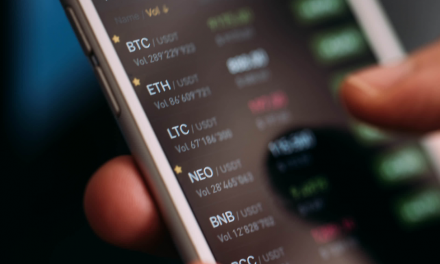By the year 2030, it is estimated that the global blockchain market will achieve a substantial value of $403.36 billion. This impressive growth is projected to occur at a compound annual growth rate (CAGR) of 67.7% from 2023 to 2030.
Blockchain, an immutable and shared ledger, plays a crucial role in facilitating transaction recording and asset tracking within business networks. It operates by storing data in chains of blocks, which are interconnected through peer-to-peer nodes. To ensure the authenticity and protection of transactions, each entry in this ledger requires the digital signature of the owner.
Moreover, blockchain technology brings forth benefits such as decreased compliance costs and accelerated data transfer processing. While Bitcoin remains one of the most prominent applications of blockchain, functioning as a decentralized digital currency, the technology holds potential beyond cryptocurrency. It finds utility in diverse areas, including supply chain management, voting systems, and digital identity verification.
The growth of the blockchain market can be attributed to various factors. The rising demand for secure and transparent payment solutions in the banking, financial services, and insurance (BFSI) sector plays a significant role, along with the increasing need to prevent data tampering in the healthcare sector. Additionally, the growing popularity of cryptocurrency further contributes to the expansion of the blockchain market. Furthermore, the adoption of blockchain technology by small and medium-sized enterprises (SMEs) and retailers presents significant opportunities in this domain.
However, the high costs associated with implementing blockchain solutions hinder market growth. Regulatory uncertainty and the lack of interoperability between different blockchain ecosystems pose significant challenges to the industry’s development.
The global blockchain market is categorized into four types: public, private, hybrid, and consortium. Among these, the private segment is expected to witness the highest CAGR during the forecast period. Private blockchains provide enterprises with an efficient means of handling confidential information, trade secrets, business records, and intellectual property. The stability and scalability offered by private blockchains make them an attractive choice for enterprises seeking robust network structures.
The global blockchain market is supported by various platforms, including Ethereum, Hyperledger, R3 Corda, Polygon, Solana, BSC, Terra, and other platforms. Of these, the Hyperledger platform is projected to register the highest CAGR during the forecast period. This platform’s flexibility, scalability, and interoperability make it well-suited for a wide range of use cases.
In terms of organization size, the global blockchain market is divided into large enterprises and small & medium-sized enterprises. The segment of small and medium-sized enterprises is expected to witness the highest CAGR during the forecast period. The growth of this segment is driven by the increasing need to address specific business challenges, enhance operational efficiency, and meet the rising demand for reliable blockchain solutions among SMEs.
The global blockchain market finds application in various areas, including digital currency, asset protection and transfer, identity protection, payments, data reconciliation and sharing, track and trace, certification, and other applications. Among these, the payments segment is projected to register the highest CAGR during the forecast period. The growth is fueled by the increasing demand for secure and reliable transactions, the need for effective payment processing platforms, and the desire to reduce the involvement of intermediaries.
The global blockchain market serves multiple sectors, including BFSI, government organizations, healthcare and life sciences, retail and e-commerce, energy and utility, professional services, media and entertainment, manufacturing, and other sectors. The healthcare and life sciences segment is expected to witness the highest CAGR during the forecast period. This growth is driven by the increasing importance of securing individuals’ information, streamlining the pre-authorization process, and facilitating efficient patient care.
In terms of regional analysis, the Asia-Pacific region is anticipated to register the highest CAGR during the forecast period. Factors contributing to this growth include the growing demand for effective digital payment services, the presence of well-established fintech companies, and the rising popularity of cryptocurrency in the region.





